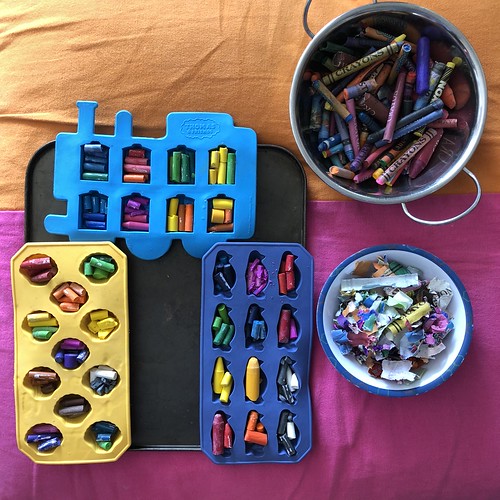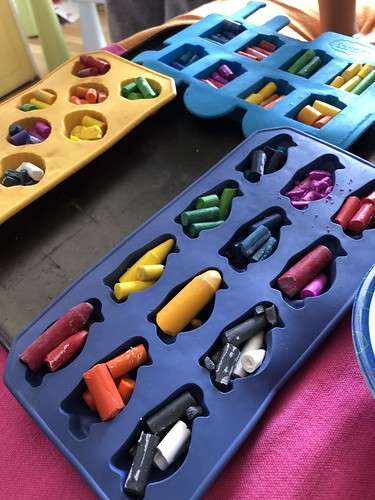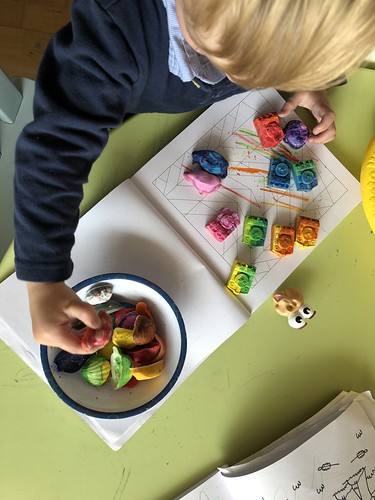I’ve done it before and I’ll keep doing it because making new crayons from broken bits is such an easy recycling project that also is useful. I find my recycled crayons ideal for when we’re out and about or traveling because they are not round and do not roll, plus I can include different colors in the same crayons block, so two colors and one crayon means less to carry and keep track of. And if I lose it, it isn’t a brand new pack of crayons so I don’t feel as bad. So, here is a refresher on how I made these plus a link to my previous two related posts: Phoenix Crayons and Upcycled Gradient Phoenix Crayons. This post will be similar, but show how you can have fun with the shapes. We made four different shapes this time!
My Process
As I always have since having my first child, I collect the broken bits and partial crayons that are difficult to hold in a Ziplock bag. Same bag has been going strong for four years now. I originally used an old Glenilen yogurt pot, but that quickly became too small.
Once I have enough to make a batch of fresh Phoenix Crayons, I place them in a bowl of cool temperature water. I let them sit for a little while so the water softens the labels.
Then we get to peeling the labels off each broken crayon. This is a fun part for the kids to help with.
Then as you go, sort the broken wrapper-free bits into sections of the silicone moulds. Sort by color.
It will be very pretty when you’re done.
If you want to go completely up cycled nuts, you could use the crayons labels to make a decoupaged project or handmade paper, but even I don’t have that kind of time so I included the wrappers in our paper recycling bin.
But I digress, this is how they’ll look when they’re ready for the oven. Preheat the oven to 150F/65C and once ready, bake the crayon trays for 15 minutes. I recommend putting all the smaller containers on one larger cookie tray to keep drips in your oven to a minimum.
Remove from the oven carefully and without tilting then set to cool for an hour before popping out of the silicone trays. While hot, ours looked like this.
The Results
Once cooled, this is how ours looked.
The Moulds That Work Best
We used a regular cupcake mould, a penguin mould, a Thomas the Tank Engine mould, and a shell mould. Make sure your moulds are heat-proof since sometimes materials will resemble silicone but not be in good shape after the oven.
In terms of which shape mould works best, choose a mould that has the main design on the bottom and is flat there, like Thomas the Tank Engine. So even if you don’t make a big crayon, the design shows. The penguin mould has the head not as low as the body, so the bodies came out but the head, beak, and feet did not always. The shells were good too, but look odd since it’s only one side of a shell. But overall, all these shapes and the basic cupcake puck-shaped one are practical because they don’t have little fiddly bits that will break off easily.
Which is your favourite?
















